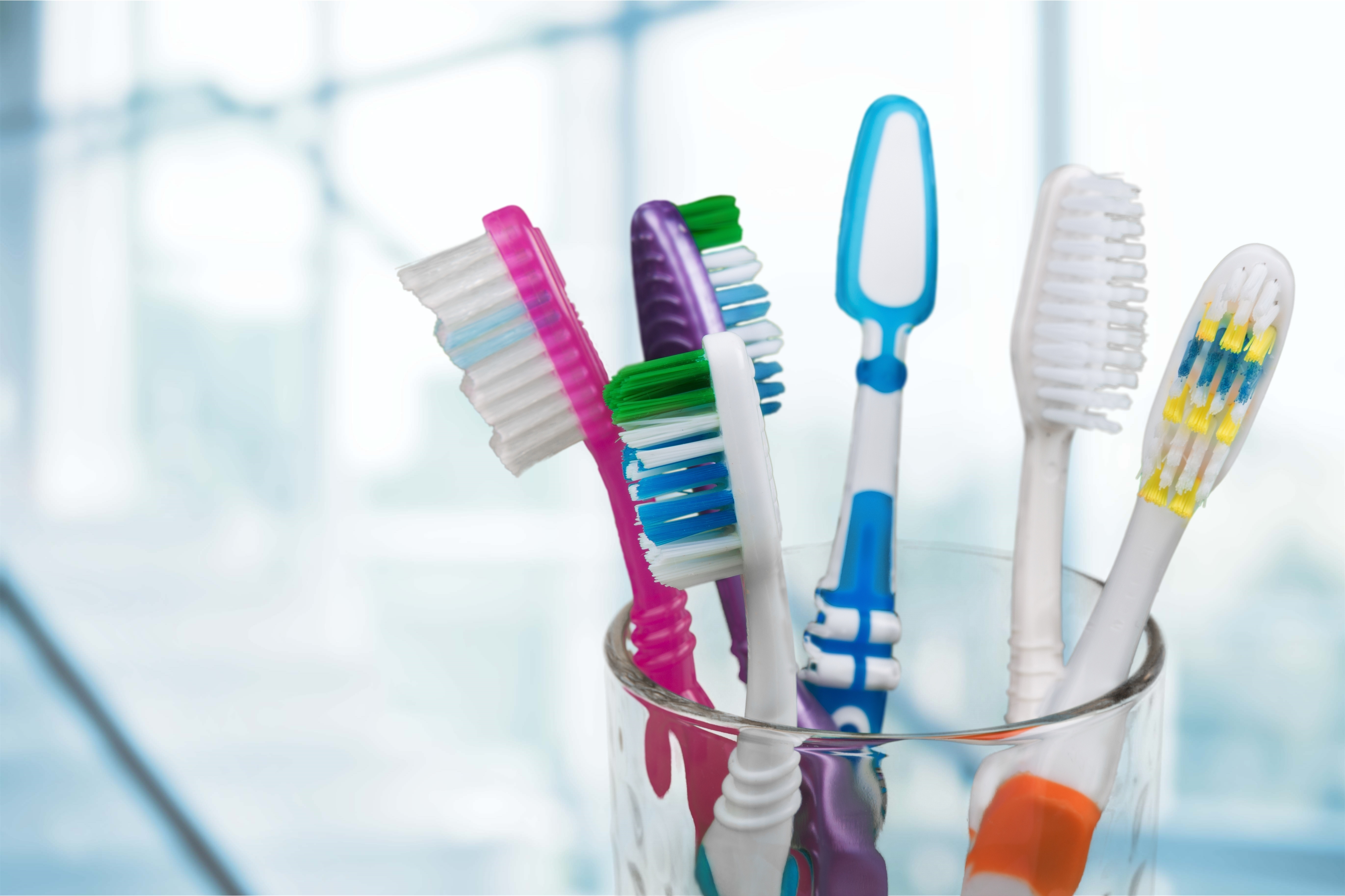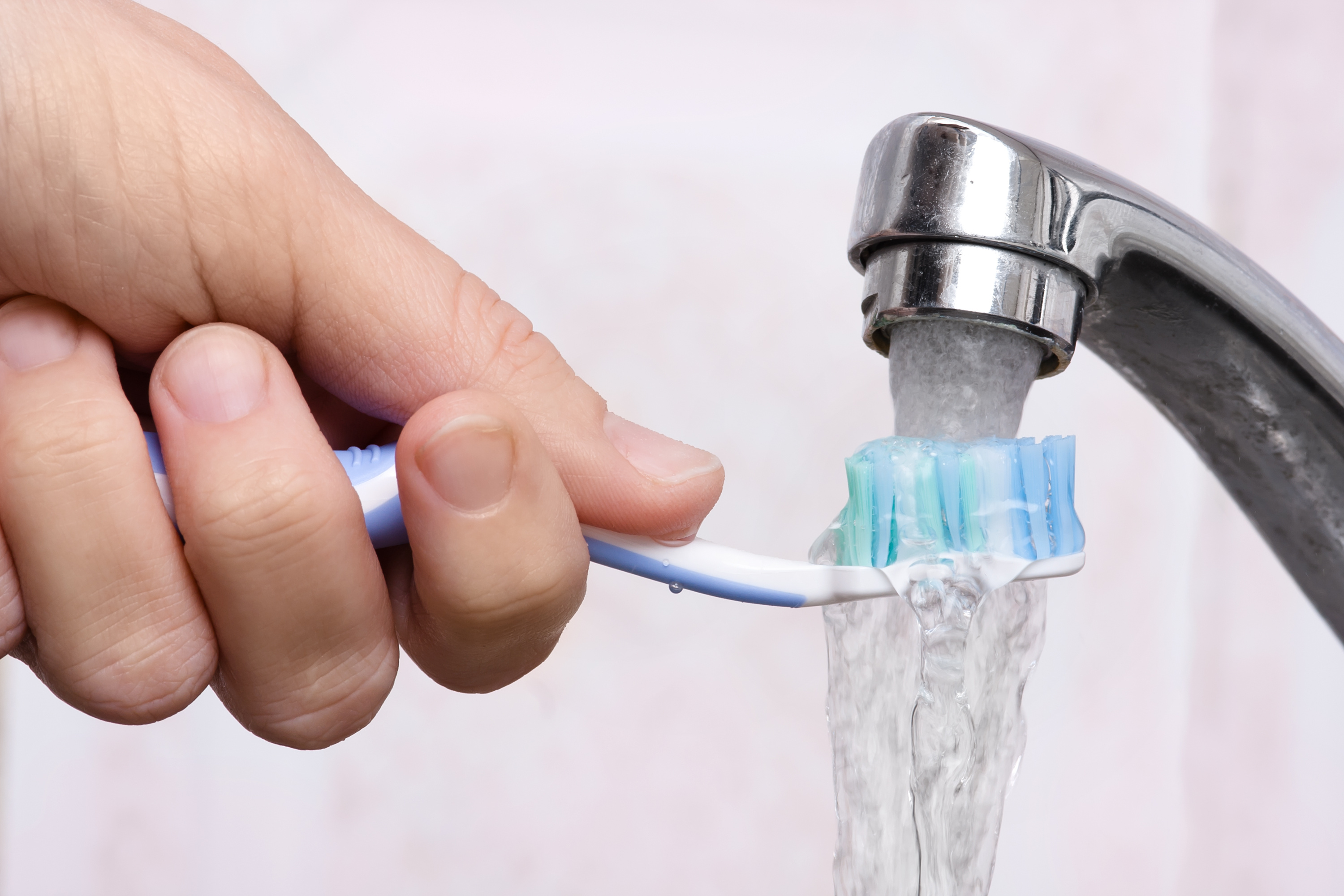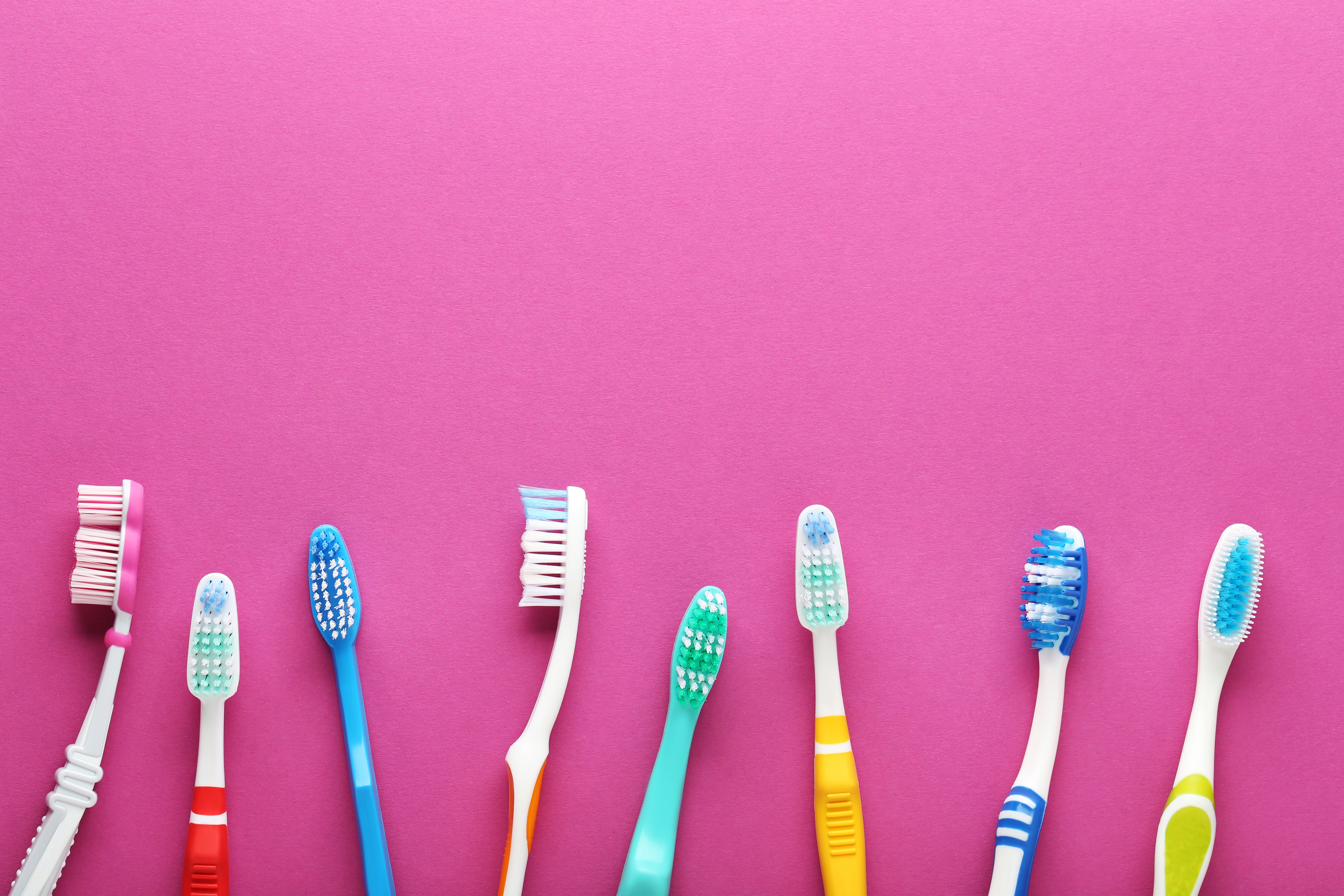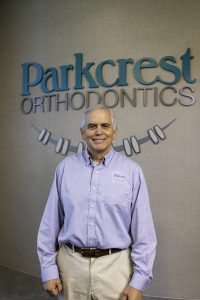How can my dentist in Springfield, MO, help me with toothbrushes?
Parkcrest Dental Group wants you to have the healthiest mouth possible, and it all starts at home with proper oral hygiene through brushing, flossing, and rinsing.
Our dentists in Springfield, Missouri, answer several frequently asked questions about toothbrushes in today’s blog.
Why do I need to brush my teeth?
Brushing your teeth helps remove food and plaque from your teeth. Removing food and plaque prevents tooth decay from bacteria that break down food particles and turn into acid, gradually wearing away the enamel of your teeth. Tooth decay can lead to pain, missing teeth, and poor bite.
How often should I brush my teeth?
We recommend brushing your teeth twice a day using fluoride toothpaste.
How long should I brush my teeth?
Brush your teeth for a minimum of two minutes each time.
How do I use a toothbrush?
Follow these simple steps to brush your teeth:
- Put a dime-sized amount of fluoride toothpaste on the bristles.
- Place your toothbrush at a 45-degree angle to the gums.
- Use short, gentle, back-and-forth strokes over each tooth.
- Brush the outer, inner, and chewing surfaces of each tooth.
- To clean inner surfaces, use up-and-down strokes by tilting your brush vertically.
- Consider dividing your teeth into four quadrants as you move through your mouth, and brush each quadrant for 30 seconds each while spending about two seconds on each tooth. For example, brush the outer surfaces of your upper teeth for 30 seconds (16 teeth at one second each), followed by the inner surfaces of your upper teeth for 30 seconds followed by the chewing surfaces. Repeat this for the lower teeth.
- Rinse a couple of times to remove the toothpaste from your mouth.
How often do I replace my toothbrush?
Replace your toothbrush every three months (once per season) or sooner if the bristles become frayed.
What types of bristles do toothbrushes have?
Toothbrushes come with hard, medium, soft, and extra-soft bristles. We recommend brushing with soft or extra-soft bristles because it doesn’t take a lot for bristles to dislodge food and remove any thin film on your teeth.
What are the different types of toothbrushes?
Toothbrushes come in a few varieties, including:
- Manual toothbrushes, or traditional ones with a standard head and handle.
- Electric toothbrushes rotate or vibrate the toothbrush head quickly. They cost more, but take less effort to brush and are ideal for people with arthritis.
- Interdental toothbrushes clean between teeth by using a poking motion to get in between teeth. These types of toothbrushes are ideal for people with braces, provide an alternative to flossing, and work in conjunction with a regular toothbrush.
- End-of-tuft toothbrushes are small, round toothbrushes with tightly packed yet soft Nylon bristles that help you get in between teeth while reaching into small spaces and behind your back-most teeth.
- Eco-friendly toothbrushes are made of sustainable materials, such as wood or bamboo, while the bristles are made of bamboo or are replaceable.
How do I keep my toothbrush clean?
You have several options when it comes to keeping your toothbrush clean:
- Rinse the bristles with hot water before and after using. This is the most effective way to keep your toothbrush clean. The hot water rinses bacteria that may have accumulated from the last time you brushed your teeth and directly after brushing your teeth.
- Soak your toothbrush in an antibacterial mouthwash or rinse for two minutes. Pour enough mouthwash into a cup to cover the head of the toothbrush and let it soak in the bottom of the cup. The downside is that this may wear out your bristles faster.
- Denture cleansers are designed to disinfect dentures every night, and they can do the same for your toothbrush. Dip your toothbrush in it for two minutes to get your brush extra clean.
- UV toothbrush sanitizers are electronic devices made specifically for toothbrushes. These devices can get expensive, but they are the best way to destroy any bacteria on your bristles.
Some other tips:
- Use a cover to keep airborne germs away.
- Store your toothbrush as far away from a toilet as possible.
- Don’t share toothbrushes with other people, even members of your own family.
- Use disposable cups to prevent the spread of germs.
- Replace your toothbrush following a sickness.
- Replace your toothbrush every three months (once a season).
What size toothbrush should I use?
Use the size toothbrush that works best for your mouth. Heads come in small, medium, and large sizes.
What bristle patterns are on toothbrushes?
Toothbrushes have wavy, tapered, and crisscross bristles. All of these patterns are effective at cleaning teeth and removing plaque.
What types of toothbrush handles are there?
Consider four main types of handles:
- Straight handles are just as the name suggests. They are like a pencil or pen with a straight handle.
- Angled handles bend backward or forward near the head to give you a better chance of reaching back teeth.
- Non-slip grips make it easier for your hands to grasp the toothbrush. These are great for people with arthritis as well as children.
- Flexible grips add comfort and are also suitable for people with arthritis.
How early should I start brushing my child’s teeth?
We recommend brushing your child’s teeth as soon as the first tooth comes in.
What types of electric toothbrushes are there?
There are two main types of electric toothbrushes, and both are effective for cleaning teeth.
- Oscillating. Oscillating toothbrushes use a fast up-and-down motion to rapidly clean teeth.
- Rotating. Toothbrushes with a rotating motion turn the head rapidly like a washing machine.
How fast do electric toothbrushes work?
Electric toothbrushes achieve anywhere from 2,500 to 7,500 brushes per minute. You don’t need to use a lot of pressure at all as the motion takes care of most of the cleaning automatically.
Electric toothbrushes are more expensive than manual ones, but they clean your teeth very well. Over time, rather than replacing the entire brush you merely replace the head.
Are electric toothbrushes more effective than manual ones?
Studies show that electric toothbrushes decrease plaque and swelling of the gums more than manual toothbrushes.
What are my choices for eco-friendly toothbrushes?
Look for eco-friendly toothbrushes made with:
- Wood
- Bamboo
- Bio-based plastic
- Replaceable brushes
- Compostable materials
- Biodegradable packaging
What toothbrushes carry the ADA Seal of Acceptance?
A total of 29 toothbrushes currently hold the ADA Seal of Acceptance. This number may change over time. Search the ADA’s database to see more details.
Who can I talk to about toothbrushes in Springfield, Missouri?
Do you have more questions about your toothbrush? Contact Parkcrest Dental or call (417) 887-1220 for more information or to make an appointment with us.











